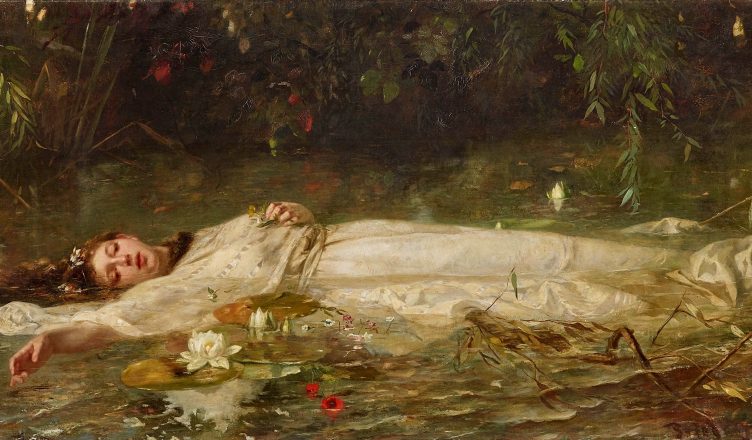“It’s always fun to talk about Shakespeare,” quipped Caroline Bicks at the start of her lecture, “Incited Minds, Rethinking Shakespeare’s Girls.” I couldn’t agree more. Much like the title of her lecture indicates, Bicks’ talk centered on stereotypes that surround adolescent girls and how the strong-Willed (pun intended) females of Shakespeare’s plays defy them. After listing the qualities of the ideal Renaissance female (one who is chaste, silent, and obedient), Bicks laid the foundation for her discussion of Shakespeare’s fourteen and fifteen-year-old girls by listing stereotypes of young women prevalent in both an early modern as well as a contemporary context: adolescent girls are marked as hysterical, erratic, and in need of saving— Ophelia is remembered most for her stint as the drowning damsel, and Miranda from The Tempest has not been given enough credit for her “beating mind.”
Bicks pointed out the ways we are misreading these young women by drawing on humoral theory, the closest thing to psychology we have from Elizabethan times. Humoral theory is a model for the basic workings of the human body, and it places humans on a spectrum that ranges from extreme heat to extreme coldness. Females were thought to have inherently cold, moist bodies, while men were hot and dry. According to this theory, female hysteria can be traced back to a lack of adequate bodily heat, further bolstering the aforementioned frenzied, fitful stereotypes of Renaissance women and girls. However, Bicks presented evidence that opposes this prejudice. In Microcosmographia, Helkiah Crooke describes female puberty as “heat gather [ing]” strength. In other words, he saw enormous potential in the female body and mind. Using Crooke’s analysis as a backdrop, Bicks went on to describe specific actions of Ophelia and Miranda, two Shakespearean girls oft dismissed as flighty females. Most notably, she pointed out that in the original quarto of Hamlet, the stage directions at the beginning of Act Four, Scene Five read “Enter Ophelia with a lute.” If these stage directions are followed faithfully, Ophelia has complete agency in this scene—she is controlling an instrument and performing before the court. Instead of acting as a female repository for male stories (by being “played” or “plucked” by the men in her life), Ophelia takes control of the scene by strumming her instrument according to her own rules.

As a Theatre/English double major with a minor in Women’s and Gender Studies, these characters and their unfortunate misreadings interest me a great deal. It is frustrating to sit in the theatre (or on my bed with Netflix open on my laptop) and watch Shakespearean girls portrayed as ditsy, passive vessels for male thoughts and actions (read: Helena Bonham Carter’s Ophelia in the 1990 film version of Hamlet). Bicks’ talk gives me hope that I’m not the only one who champions plucky, mindful interpretations of Shakespeare’s females… after all, that’s how they were written. How can we call a young woman like Desdemona meek or fragile when she “trumpet[s] to the world” her blatant defiance of tradition (letting her father choose her husband for her)? Can we really see a girl like Miranda, who interrupts and corrects Prospero, as a passive recipient of her father’s art? A shy and sheepish interpretation of Olivia from Twelfth Night makes no sense—a wary girl would never be so bold as to say, “Tis not that time of moon with me to make one in so skipping a dialogue.” I could go on, but alas, I’ll refrain… for now.





